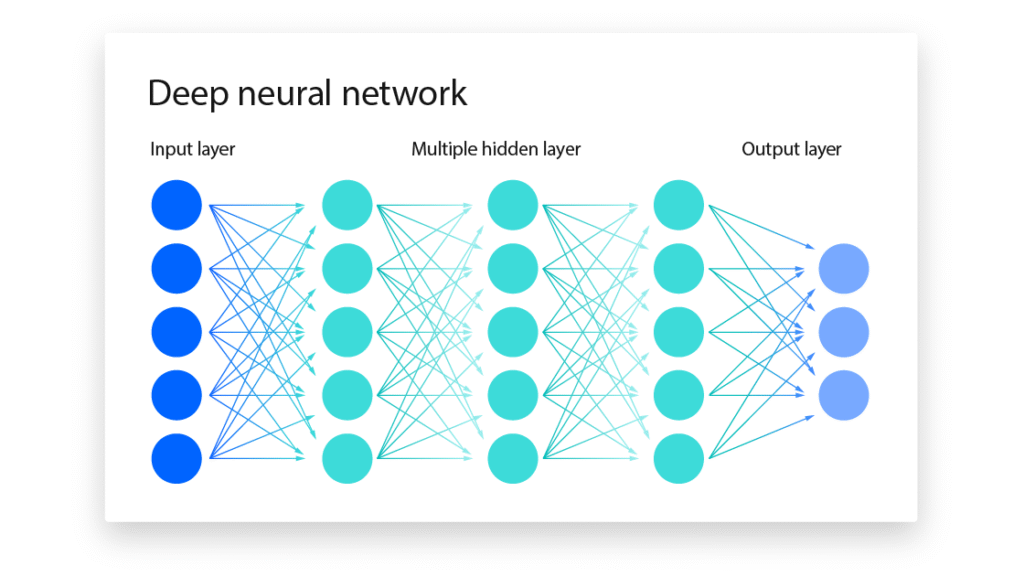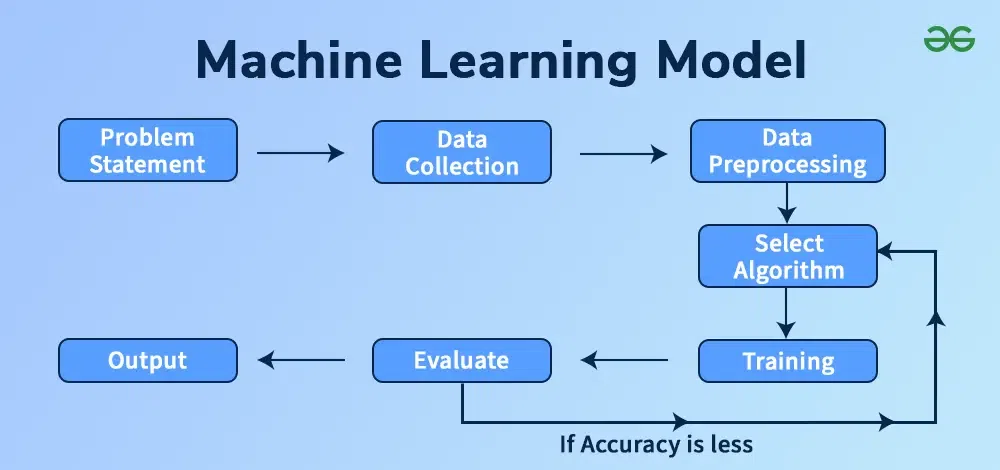Machine Learning (ML) is the engine powering today’s most advanced technologies—voice assistants, recommendation systems, fraud detection engines, autonomous vehicles, and even medical diagnosis tools. At the heart of machine learning lie models—mathematical structures trained to recognize patterns, make predictions, and automate tasks based on data.
This article explores machine learning models in depth: what they are, how they work, key types, real-world examples, and how to choose the right model for a given problem. Whether you’re a beginner curious about AI or a business leader wanting to apply ML, this guide breaks it all down in clear, easy-to-follow terms.
What Is a Machine Learning Model?
A machine learning model is a computational algorithm that learns from data to make predictions or decisions without being explicitly programmed for specific tasks. The model identifies patterns or relationships within datasets and applies what it learns to new, unseen data.
Simplified Analogy:
Imagine teaching a child to recognize dogs by showing pictures. Over time, the child understands common features—four legs, tail, fur, ears. Similarly, an ML model learns from data (images, texts, numbers) and builds an internal understanding to classify or predict outcomes.
The ML Model Lifecycle
Every machine learning model goes through the following phases:
- Data Collection – Gather training data (structured or unstructured).
- Preprocessing – Clean, normalize, and structure the data.
- Model Selection – Choose an algorithm suitable for the task.
- Training – Feed the data into the model so it can learn.
- Evaluation – Assess model accuracy using metrics like precision or RMSE.
- Prediction/Deployment – Use the trained model for real-world applications.
Categories of Machine Learning Models
Machine learning models are categorized based on how they learn from data. The three major categories are:
1. Supervised Learning
In supervised learning, the model is trained on labeled data, meaning each input has a known output.
Examples:
- Spam email detection
- Predicting house prices
- Image classification (e.g., cat vs. dog)
Popular Models:
| Model | Description |
| Linear Regression | Predicts numerical values (e.g., price, temperature) |
| Logistic Regression | Classifies binary outcomes (e.g., yes/no, 0/1) |
| Decision Trees | Splits data into branches for decision-making |
| Random Forests | Multiple trees combined to improve accuracy |
| Support Vector Machines (SVM) | Classifies by creating an optimal boundary |
| K-Nearest Neighbors (KNN) | Classifies based on closest data points |
2. Unsupervised Learning
Here, the model works with unlabeled data. It tries to find structure or patterns without predefined outcomes.
Examples:
- Customer segmentation
- Topic modeling
- Anomaly detection
Popular Models:
| Model | Description |
| K-Means Clustering | Groups data into K similar clusters |
| Hierarchical Clustering | Builds a tree of nested clusters |
| Principal Component Analysis (PCA) | Reduces data dimensions for visualization |
| Autoencoders | Compress and reconstruct data to detect features |
3. Reinforcement Learning
In reinforcement learning, an agent learns by interacting with an environment and receiving feedback in the form of rewards or penalties.
Examples:
- Game-playing AI (e.g., AlphaGo)
- Self-driving car navigation
- Robotics
Popular Algorithms:
| Algorithm | Description |
| Q-Learning | Learns optimal actions via Q-values |
| Deep Q-Network (DQN) | Combines Q-learning with neural networks |
| Policy Gradient Methods | Directly optimizes policy decisions |
Neural Networks and Deep Learning

A major subset of ML models is based on neural networks, which are especially effective in processing images, text, and audio.
Types of Neural Networks:
| Neural Network Type | Application Example |
| Feedforward NN | Simple classification tasks |
| Convolutional NN (CNN) | Image and video recognition |
| Recurrent NN (RNN) | Time series, speech recognition |
| Long Short-Term Memory (LSTM) | Predicting sequences, translation |
| Transformers | Language models like ChatGPT, BERT |
Model Performance Metrics
Evaluating the performance of a machine learning model depends on the task type.
For Classification:
- Accuracy: (Correct predictions) / (Total predictions)
- Precision: Correct positive predictions / All positive predictions
- Recall: Correct positive predictions / Actual positives
- F1 Score: Harmonic mean of precision and recall
For Regression:
- Mean Absolute Error (MAE)
- Mean Squared Error (MSE)
- Root Mean Squared Error (RMSE)
- R-squared (R²)
Real-World Examples of Machine Learning Models
1. Netflix Recommendations
Model: Collaborative Filtering + Neural Networks
Netflix analyzes what users watch and like to recommend similar content. It uses unsupervised learning for clustering similar users and supervised learning for prediction.
2. Credit Scoring in Banks
Model: Logistic Regression, Random Forest
Models predict whether a borrower is likely to default, based on credit history, income, and other variables.
3. Email Spam Detection
Model: Naive Bayes
This classifier calculates the probability of a message being spam based on keyword frequency.
4. Self-Driving Cars
Model: Reinforcement Learning, CNNs
These cars use cameras and sensors to recognize traffic signs, pedestrians, and road lanes while optimizing driving strategies through trial-and-error learning.
Challenges in Using Machine Learning Models
| Challenge | Description |
| Overfitting | Model performs well on training data but poorly on new data |
| Data Quality | Garbage in, garbage out—models need clean, labeled data |
| Bias in Data | Historical or social bias may influence predictions |
| Model Interpretability | Complex models like deep neural nets are hard to explain |
| Scalability | Some models don’t perform well on large datasets |
Tips for Choosing the Right Model
- Understand the Problem Type – Classification, regression, clustering, etc.
- Analyze the Data – Size, dimensionality, missing values.
- Start Simple – Use basic models like linear regression or decision trees.
- Tune Hyperparameters – Use Grid Search or Random Search.
- Evaluate Robustly – Use cross-validation, confusion matrices, ROC curves.
- Avoid Overfitting – Use regularization (L1, L2), pruning, or dropout.
The Future of Machine Learning Models
Emerging trends are reshaping how models are built and deployed:
1. AutoML
Automated Machine Learning tools allow non-experts to train, optimize, and deploy models with minimal coding. Platforms like Google AutoML and H2O.ai are gaining popularity.
2. Explainable AI (XAI)
Tools like SHAP and LIME are helping developers interpret how models make decisions—especially crucial in finance and healthcare.
3. Foundation Models
Large pre-trained models like OpenAI’s GPT-4, Google’s Gemini, and Meta’s LLaMA are being fine-tuned for specific tasks, reducing the need to build models from scratch.
4. Federated Learning
Models are trained across decentralized devices or servers, keeping data private and secure—ideal for mobile and healthcare applications.
Conclusion
Machine learning models are the backbone of today’s intelligent systems. From a simple linear regression predicting sales to advanced deep neural networks powering self-driving cars and AI assistants, these models are transforming industries and everyday life.
Understanding the core types, applications, and evaluation methods of ML models is critical—not just for data scientists, but for business leaders, developers, students, and professionals who aim to harness the power of data.
